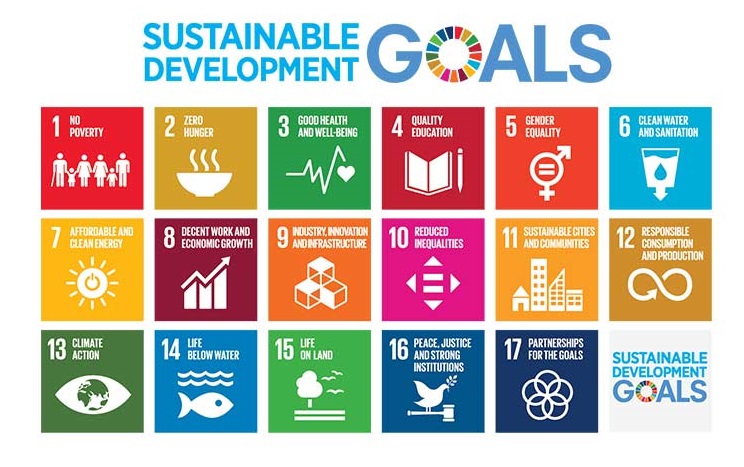QSAND and the Sustainable Development Goals

|
| The UN Sustainable Development Agenda, adopted by world leaders in 2015, maps out a 15-year plan to fight inequality, end poverty, and tackle climate change challenges. The 17 goals are designed to build upon the Millennium Development Goals and go further towards ensuring sustainability is at the forefront of human development up until 2030. |
For BRE, sustainability and resilience are key focus areas. QSAND (Quantifying Sustainability in the Aftermath of Natural Disasters) is a self-assessment tool to promote sustainable approaches to relief, recovery and reconstruction after a natural disaster. Through QSAND we are making a contribution to aid the achievement of several of these goals in disaster-affected communities around the globe.
Central to the thinking behind the QSAND tool is that sustainable approaches to reconstruction can help limit the impact disasters have in the short, medium and long term and improve the resilience of local communities to future disasters as they occur. It is this holistic approach and a strong focus on the development of local skills and capabilities that demonstrates QSANDs overarching support for the Sustainable Development Goals (SDGs).
In addition to its focus on sustainable cities and communities (SDG 11), QSAND supports the goals by promoting clean and renewable energy solutions (SDG 7), responsible consumption (SDG 12), and clean water and sanitation (SDG 6) alongside many other areas.
Consideration of the natural environment alongside the needs of people globally is important in measuring success in the pursuit of the SDGs. It can offer a form of protective barrier against disasters. QSAND does this by providing a framework which can be used to support protection of local ecology, balancing this against the maintenance of livelihoods and economic prosperity. Often, protecting natural resources can also support livelihoods, further reducing a community vulnerability to disasters.
Whilst QSAND is designed as a tool to be used in response to a specific disaster to support the recovery process, its sustainability scope is wider than this. By considering the medium to longer-term impacts of decisions made in the early days of disaster recovery, it helps provide a framework that can help avoid, limit or mitigate further harm to the natural environment that can occur during reconstruction.
QSAND is proud to support the aims laid out in the Sustainable Development Goals, and support efforts to contribute to the global movement towards a sustainable, resilient, and prosperous future.
For more information on QSAND, please visit our website.
This article was written by Yetunde Abdul and originally published on BRE Buzz on 7 January 2019: http://brebuzz.net/2019/01/07/qsand-and-the-sustainable-development-goals/
--BRE Buzz
[edit] Related articles on Designing Buildings Wiki
- An interpretation of the SDG's for use at an infrastructure project level.
- BRE Buzz articles on Designing Buildings Wiki.
- BREEAM.
- Building Research Establishment.
- Buildings that help rebuild lives and communities.
- Culture: Urban Future.
- Helping achieve the UN's Sustainable Development Goals.
- Interactive CEEQUAL and Sustainable Development Goals mapping.
- QSAND.
- QSAND application in Nepal.
- Reconstruction following typhoon Haiyan.
- Research and development in disaster response.
- Sustainable Development Goals and civil engineering.
- University Research collaboration.
Featured articles and news
RTPI leader to become new CIOB Chief Executive Officer
Dr Victoria Hills MRTPI, FICE to take over after Caroline Gumble’s departure.
Social and affordable housing, a long term plan for delivery
The “Delivering a Decade of Renewal for Social and Affordable Housing” strategy sets out future path.
A change to adoptive architecture
Effects of global weather warming on architectural detailing, material choice and human interaction.
The proposed publicly owned and backed subsidiary of Homes England, to facilitate new homes.
How big is the problem and what can we do to mitigate the effects?
Overheating guidance and tools for building designers
A number of cool guides to help with the heat.
The UK's Modern Industrial Strategy: A 10 year plan
Previous consultation criticism, current key elements and general support with some persisting reservations.
Building Safety Regulator reforms
New roles, new staff and a new fast track service pave the way for a single construction regulator.
Architectural Technologist CPDs and Communications
CIAT CPD… and how you can do it!
Cooling centres and cool spaces
Managing extreme heat in cities by directing the public to places for heat stress relief and water sources.
Winter gardens: A brief history and warm variations
Extending the season with glass in different forms and terms.
Restoring Great Yarmouth's Winter Gardens
Transforming one of the least sustainable constructions imaginable.
Construction Skills Mission Board launch sector drive
Newly formed government and industry collaboration set strategy for recruiting an additional 100,000 construction workers a year.
New Architects Code comes into effect in September 2025
ARB Architects Code of Conduct and Practice available with ongoing consultation regarding guidance.
Welsh Skills Body (Medr) launches ambitious plan
The new skills body brings together funding and regulation of tertiary education and research for the devolved nation.
Paul Gandy FCIOB announced as next CIOB President
Former Tilbury Douglas CEO takes helm.
UK Infrastructure: A 10 Year Strategy. In brief with reactions
With the National Infrastructure and Service Transformation Authority (NISTA).























